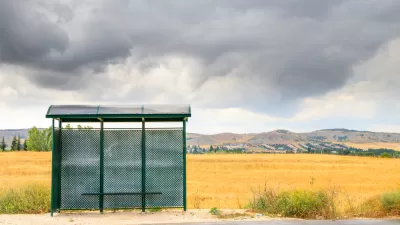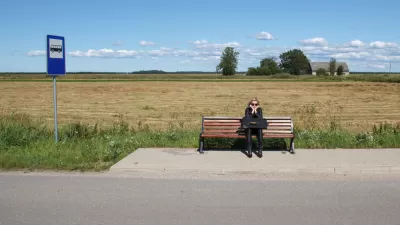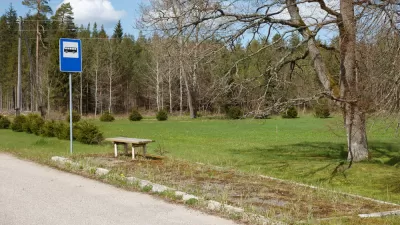A new report describes the important roles that public transit plays in rural communities and small towns, current demographic and economic trends that are increasing these demands, and examples of successful rural transit development programs.
A new report, "Public Transportation’s Impact on Rural and Small Towns: A Vital Mobility Link" [pdf] by the American Public Transportation Association and the Community Transportation Association of America describes the important roles that public transit plays in small towns and rural communities, examples of rural community public transport programs, and responses to common rural transit myths.
Public transportation helps rural communities become more efficient and equitable. It allows all residents, including non-drivers, enjoy independent mobility and receive a fair share of public spending on transportation facilities and services. Although public transit serves only a minor portion of total rural travel, many of those trips are crucial, including access to healthcare, basic shopping, employment and education.
This report describes current demographic and economic trends that are increasing demands for affordable mobility options in rural communities, including aging population, high poverty rates, and a large portion of military veterans. Serving these demands can provide multiple benefits; it helps rural residents age in place and attracts new residents, businesses and tourists. However, many of these benefits can be overlooked or undervalued in formal transportation planning. As a result, the importance of rural public transit improvements is often under estimated.
FULL STORY: Public Transportation’s Impact on Rural and Small Towns: A Vital Mobility Link

Study: Maui’s Plan to Convert Vacation Rentals to Long-Term Housing Could Cause Nearly $1 Billion Economic Loss
The plan would reduce visitor accommodation by 25,% resulting in 1,900 jobs lost.

North Texas Transit Leaders Tout Benefits of TOD for Growing Region
At a summit focused on transit-oriented development, policymakers discussed how North Texas’ expanded light rail system can serve as a tool for economic growth.

Why Should We Subsidize Public Transportation?
Many public transit agencies face financial stress due to rising costs, declining fare revenue, and declining subsidies. Transit advocates must provide a strong business case for increasing public transit funding.

How to Make US Trains Faster
Changes to boarding platforms and a switch to electric trains could improve U.S. passenger rail service without the added cost of high-speed rail.

Columbia’s Revitalized ‘Loop’ Is a Hub for Local Entrepreneurs
A focus on small businesses is helping a commercial corridor in Columbia, Missouri thrive.

Invasive Insect Threatens Minnesota’s Ash Forests
The Emerald Ash Borer is a rapidly spreading invasive pest threatening Minnesota’s ash trees, and homeowners are encouraged to plant diverse replacement species, avoid moving ash firewood, and monitor for signs of infestation.
Urban Design for Planners 1: Software Tools
This six-course series explores essential urban design concepts using open source software and equips planners with the tools they need to participate fully in the urban design process.
Planning for Universal Design
Learn the tools for implementing Universal Design in planning regulations.
Ascent Environmental
Borough of Carlisle
Institute for Housing and Urban Development Studies (IHS)
City of Grandview
Harvard GSD Executive Education
Toledo-Lucas County Plan Commissions
Salt Lake City
NYU Wagner Graduate School of Public Service





























